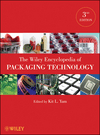FPA Update
FPA Releases 2018 State of the Flexible Packaging Industry Report
A key resource for U.S. flexible packaging industry data and information








The 2018 report, recently released by the Flexible Packaging Association (FPA), provides industry converters, suppliers, investors, and analysts with insight into the performance of the U.S. flexible packaging industry over the past year. This definitive source of data and information examines several aspects of the industry including:
- Performance (growth, revenue/volume expectations, profitability, capital spending)
- Materials and processes (printing, expected material usage)
- End-uses (end-use forecast, U.S. Census Bureau retail segments data)
- Structure and consolidation (M&A activity)
- Imports and exports (trade outlook)
- Industry vision, challenges, and critical issues
Over the next few months, the FPA Update will include reviews of key sections within the 2018 report. Following is an overview of the “Industry Performance” and “Materials & Processes” sections of the report.
U.S. Flexible Packaging Industry Performance
The total U.S. flexible packaging industry is estimated to be approximately $31 billion in annual sales and a volume of 18 billion pounds for 2017. The $31 billion includes packaging for retail and institutional food and non-food (including medical and pharmaceutical), industrial materials, shrink and stretch films, retail shopping bags, consumer storage bags, and wraps and trash bags.
Flexible packaging represents approximately 19% of the total $167 billion U.S. packaging industry, and is the second largest packaging segment behind corrugated paper and just ahead of bottles and miscellaneous rigid plastics packaging. Flexible packaging’s solid long-term strength, coupled with flexible packaging replacing other packaging formats, resulted in the growth of flexibles from 17% in 2000 to the current level of 19% in 2017.
According to the report, growth of the U.S. flexible packaging industry has been steady over the past 10 years with a compound annual growth rate (CAGR) of 1.6% and a 2017 annual growth rate of 2.6%. FPA estimates that the industry will increase to $31.9 billion in 2018.
Materials & Processes
Flexible packaging companies utilize a number of materials and processes to produce flexible packaging. Film and sheet, and plastic resins account for 64% of the materials used in the U.S. flexible packaging industry. Inks and foil account for approximately 8%; paper, 7%; and coatings and adhesives, 4%.
The report details that PE (polyethylene) film is used by 84% of survey respondents, and accounts for 42% of total film use. PE resin is used by 84% of survey respondents and accounts for 82% of total resin use.
FPA survey data from 2015-2017 indicates that average direct material costs have ranged from 53%-58% of net sales and operating profit has been in the range of 6%-7% of net sales over the period of 2015-2017.
Survey data also shows that converters print from 2 to 10 colors with an overall average of 7.1 colors. The total number of presses was estimated at about 3,000 including flexographic, gravure, in-line, offset, and other simple presses. Survey results indicated that 12% of respondents used digital printing in 2017, versus 8% in 2016.
FPA gathers the information contained in the report through several reliable industry sources, including the FPA members’ State of the U.S. Flexible Packaging Industry Survey; the FPA non-members’ Industry-Wide Converter Survey; the Annual Survey of Manufactures (ASM), published by the U.S. Census Bureau; the U.S. Department of Labor; the U.S. Department of Commerce; industry analysts; and investment banking reports. Data collected from these sources provides a more complete picture of the U.S. flexible packaging industry, and helps to crosscheck information regarding industry size, structure, market segments, and key packaging products.
For More Information
For more information on the FPA 2018 State of the Flexible Packaging Industry Report, contact FPA’s Business & Economic Research Division, at fpa@flexpack.org or 410-694-0800, or visit www.flexpack.org.
Looking for a reprint of this article?
From high-res PDFs to custom plaques, order your copy today!











